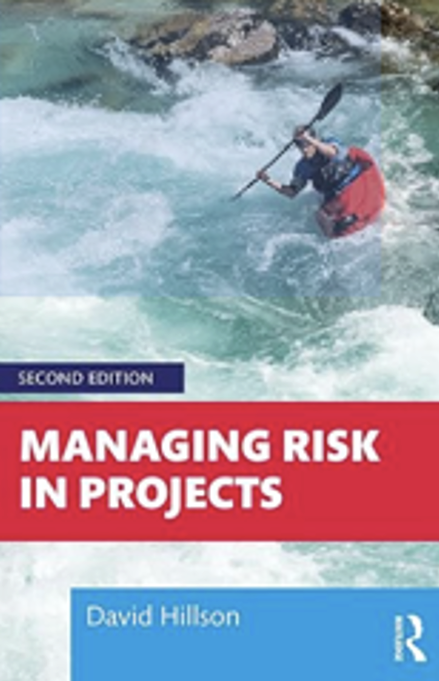Book Reviews: Project Management

The Experimentation Field Book: A Step-by-Step Project Guide
Jeanne Liedtka, Elizabeth Chen, Natalie Foley, and David Kester. New York, NY: Columbia University Press. 2024. 108 pages.
Index Terms—assumption testing, experimental research, innovation, iterative improvement, prototyping
Reviewed by Lathiifah Thawafani , Student, Universitas Gadjah Mada, supported by Lembaga Pengelola Dana Pendidikan (LPDP), Indonesia.
The Experimentation Field Book: A Step-by-Step Project Guide provides researchers and practitioners with guidance on designing and conducting experiments to validate innovative ideas. It emphasizes a structured, hypothesis-driven approach to identify key assumptions, select testing methods, and gather data. This book includes guidelines and templates for documenting testing plans, covering test types, prototype formats, participants, sample sizes, and budgets. It emphasizes the importance of proper documentation to maintain credibility and transparency, particularly in cases of unexpected results.
Jeanne Liedtka, Elizabeth Chen, Natalie Foley, and David Kester present a methodology supporting rigorous, iterative innovation and experimentation. Key components include tools and templates to prioritize and test assumptions about new concepts. The Prioritizing Assumption tool helps teams rank and test critical assumptions first. The methodology stresses repeated testing and refinement, adapting plans based on new insights to reduce risk and increase success.
Successful experimental research and innovation require a structured approach, and the authors provide a range of templates to achieve this. One key template is the Business Value Matrix, which helps teams focus on projects with the highest return on investment. The Prioritizing Assumptions tool enhances this process by pinpointing the most crucial assumptions that require immediate testing. Deciding on the appropriate type of research is also crucial, and the Say–Do Continuum assists teams in choosing between generative research to generate ideas or evaluative research to test solutions. The Assumption Surfacing tool thoroughly examines all aspects of the concept, including user desirability and technical feasibility. Finally, the Test Planning Template documents the testing process, tracking assumptions, evidence sought, and data collected. By collectively using this suite of templates, teams can conduct experimental research systematically, prioritize and test their concepts effectively, and refine them based on the results obtained.
This study’s strength lies in its systematic approach to innovation, which helps researchers test assumptions and refine concepts. It offers a framework for prioritized testing and iterative improvement, emphasizing the right prototype format and detailed documentation to ensure credible research. However, the detailed methodology can be time-consuming and may require flexibility for different projects.
The Experimentation Field Book equips researchers with a structured approach to innovation and experimentation. Its clear methodology, detailed templates, and emphasis on iterative testing and documentation guide researchers through every stage of the experimental process, from assumption prioritization and prototype development to data analysis, paving the way for groundbreaking advancements.

Managing Risk in Projects, 2nd ed.
David Hillson. New York, NY: Routledge. 2024. 170 pages, including index.
Index Terms—leadership, mitigation, project lifecycle, risk management, uncertainty
Reviewed by Putri Melati, Student, Universitas Gadjah Mada, supported by Lembaga Pengelola Dana Pendidikan (LPDP), Indonesia.
Managing Risk in Projects, 2nd Edition explores risk management principles and practices highlighting the need for a tailored approach that matches project complexity. Regular risk updates are crucial, especially for high-risk and long-duration projects. The project sponsor must provide resources and funding, as well as actively monitor risk thresholds for project success. The book also addresses theoretical foundations, referencing Dale Cooper and John Major. Risk management applies to all projects across industries and countries adhering to international best practices. Besides tools and techniques, effective risk management necessitates understanding human behavior and psychology to improve decision-making and organizational strategy.
The book advances project management by thoroughly analyzing risk management practices and their integration with other disciplines. It offers practical guidance on implementing strategies, strengthens theoretical foundations, and highlights the crucial role of leadership.
David Hillson defines risk as “uncertainty that matters” (p. xiv)marking a key shift in risk management. This definition emphasizes the impact of uncertainty on achieving goals rather than just the uncertainty itself, highlighting its potential influence on objectives. The author contends that while not all uncertainties are risks, all uncertainties can affect goal achievement positively or negatively. This view expands the traditional focus on negative outcomes to include opportunities for favorable results. By incorporating the identification and exploitation of positive uncertainties, Hillson enhances the scope and value of risk management. His definition aligns with the broader aim of risk management, which is to optimize the achievement of project and organizational goals by addressing uncertainties with the greatest potential impact.
Effective project risk management requires integrating diverse techniques into a cohesive strategy. The “Built-In, Not Bolt-On” approach incorporates risk management throughout the project lifecycle. By breaking the project into smaller components, detailed risk analysis and targeted mitigation become possible. Tools such as quantitative risk analysis, scenario planning, and sensitivity analysis provide essential data and enhance assessment accuracy. Additionally, fostering a culture of risk awareness and proactive management is crucial. Combining these methods allows organizations to better identify, analyze, and manage project risks, thereby improving the likelihood of project success.
The book provides a thorough exploration of risk management, offering valuable insights and practical guidance for handling project risks. Its in-depth coverage delivers both breadth and depth benefiting readers aiming to deepen their understanding of the field. However, the material’s complexity and the potential for rapid changes in the field may pose challenges that readers and practitioners need to navigate to fully leverage its benefits.
Managing Risk in Projects is highly relevant to a wide audience in project and risk management, particularly project managers who play a l role in project execution and risk management. The book’s comprehensive coverage, from foundational concepts to advanced practices, aims to boost project managers’ skills in handling uncertainties, thereby advancing the broader field of project management excellence. This resource is invaluable for practitioners, scholars, and organizations aiming to improve project outcomes through effective risk management.

